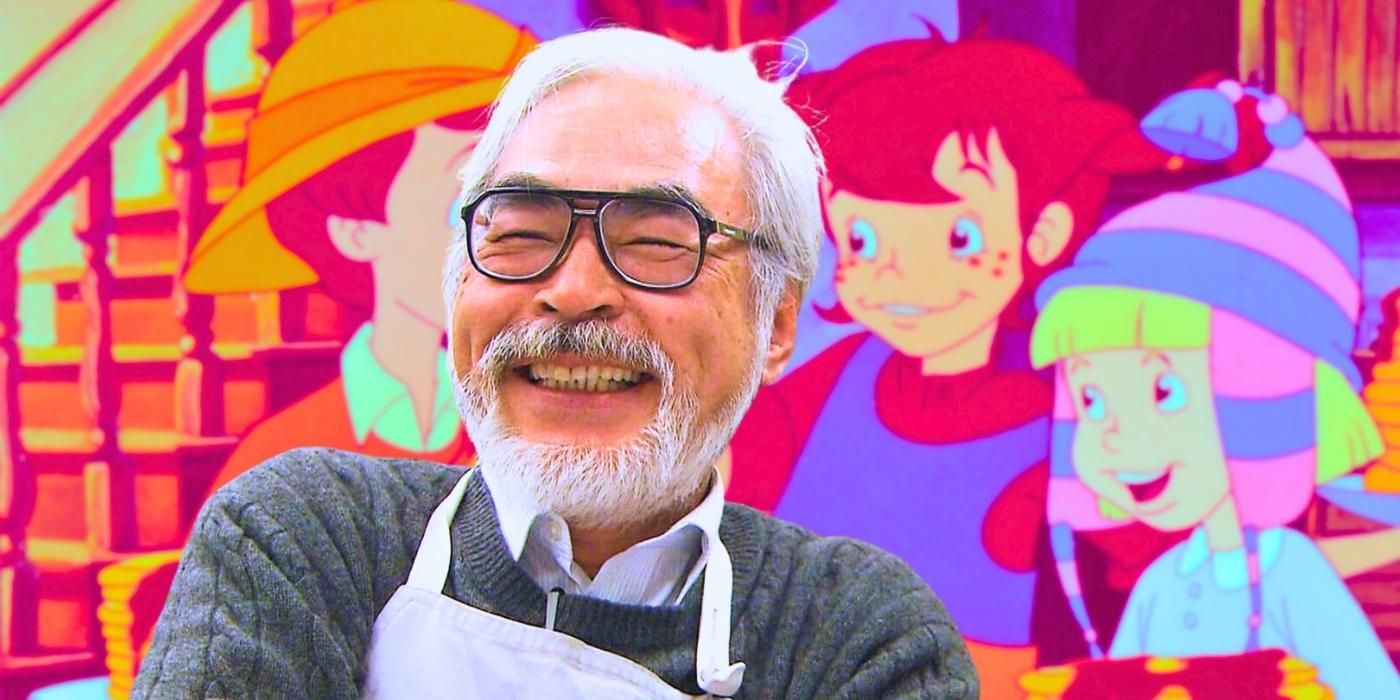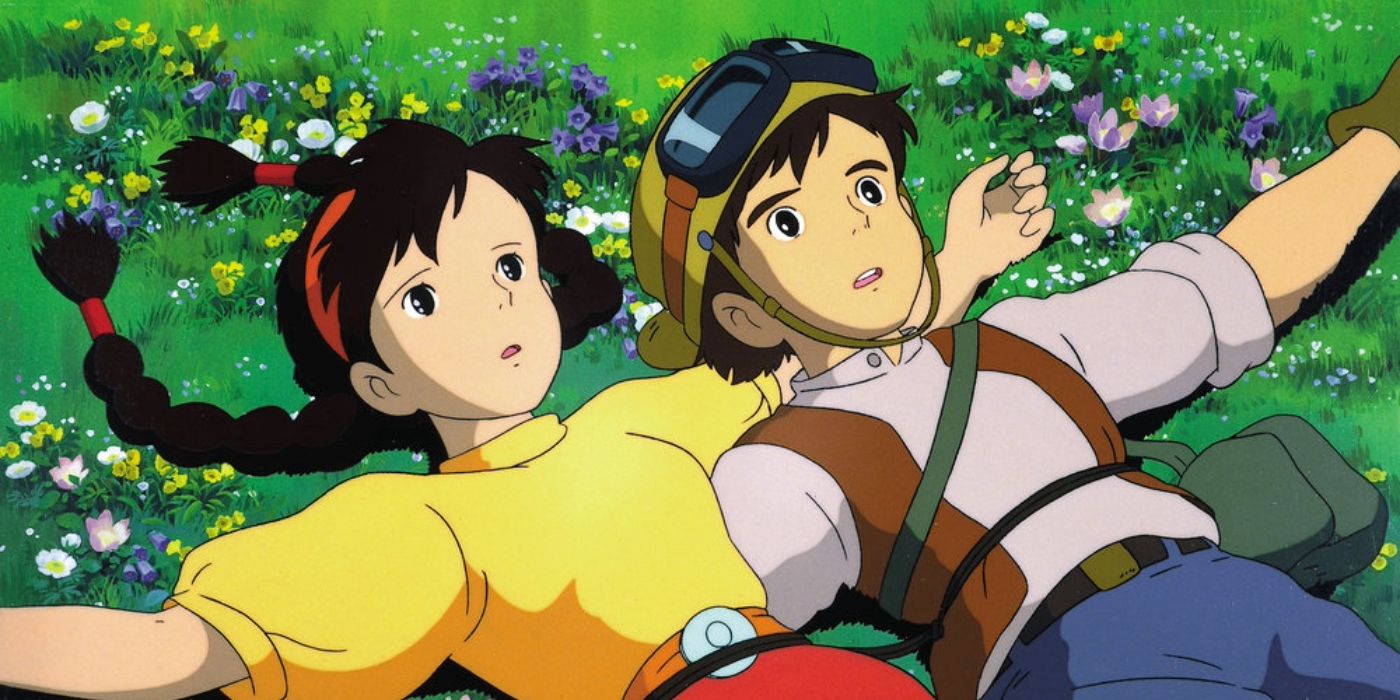The Big Picture
- Castle in the Sky is Studio Ghibli’s first full-length feature and showcases the studio’s iconic blend of fantasy, mythology, and youthful wonder.
- Hayao Miyazaki’s creative freedom in founding Studio Ghibli allowed him to fully express himself and achieve a new level of animation quality.
- The film explores Miyazaki’s worldview, criticizing aggressive military and colonial forces while emphasizing the optimism and autonomy of the child protagonists.
When you think of Studio Ghibli, it’s likely that flashes of Spirited Away, My Neighbor Totoro, and if you’re cool, avian pigs fill your brain. They’ve repeatedly created some of the most iconic animated films in recent decades, and have built up various worlds and mythologies that will likely continue to convert casual viewers into lifelong fans for years to come. There’s a sea of artists behind the scenes who have had a hand in crafting these classics, but one man is found at the center of almost every one of the studio’s best movies. That man is Hayao Miyazaki. You probably know him by now, but there was a time when he was just another filmmaker making animated fantasy movies. Great animated fantasy movies, but nothing groundbreaking. That is… until Castle in the Sky, Studio Ghibli’s first full-length feature.
Castle in the Sky came to bat with everything that Miyazaki and Ghibli would be about in the coming decades. It’s an immaculately animated fantasy adventure with a retrofuturistic aesthetic, rich mythology, and the kind of wide-eyed, youthful wonder that all of this studio’s best movies bear. Miyazaki is a master filmmaker in that he catches people’s eyes with gorgeous visuals, but when he’s got you on his line, he reels you in with themes of anti-colonialism, anti-military, pacifism, and so much more. These aren’t movies just for kids to enjoy. In fact, movies like Castle only get better with age, both the movie’s age and the age of the viewer. After spending his first two features crafting fun adventure movies for other studios, it’s clear that Miyazaki was ready to say something with his third. Castle in the Sky is the work of a once-in-a-generation artist when they finally get the chance to truly arrive on the scene. Now that their latest film The Boy and the Heron is hitting theaters worldwide, it’s best to go back to where everything started for Studio Ghibli.
Castle in the Sky
A young boy and a girl with a magic crystal must race against pirates and foreign agents in a search for a legendary floating castle.
- Release Date
- August 2, 1986
- Runtime
- 124
‘Castle in the Sky’ Would Pave the Way for Everything to Come for Studio Ghibli
Castle in the Sky isn’t exactly Studio Ghibli’s most famous film, but it is the studio’s first, so it’s somewhat surprising that it doesn’t show up higher on most people’s lists. Its story follows Pazu and Sheeta (James Van Der Beek and Anna Paquin in the English dub), a young boy and girl who venture out to find Laptu, a mysterious floating castle, while also trying to keep a magic crystal from the hands of pirates and government forces. While Miyazaki’s subsequent releases would vary in maturity, darker and lighter tones, and different degrees of fantasy storytelling, Castle in the Sky is the perfect intersection of all of these ideas and tones. It isn’t quite as lighthearted as movies like the previously hinted at Porco Rosso or Kiki’s Delivery Service, but it isn’t as dark as Princess Mononoke or Spirited Away either. This wasn’t Miyazaki’s first feature, but by founding his own production company, he was able to work with more creative freedom than ever. With that, Miyazaki made a movie that shows an artist whose creativity can go in a vast number of different directions.
Before Castle in the Sky, Miyazaki had directed two features. First was 1979’s The Castle of Cagliostro, a “capital F” fun adaptation of the Lupin III manga series. Five years later, he would release his sophomore feature, Nausicaä of the Valley of the Wind, a film adaptation of his 1982 manga of the same name, and an even deeper dive into the fantasy genre than his debut. Both of these movies rock, but Miyazaki wasn’t exactly working for himself yet (no, not even in a movie that is adapted from his own manga). They can stand with the rest of his filmography in terms of their fun factor, but Miyazaki’s own worldview wasn’t exactly in the picture yet, nor was his high standard for animation quality.

What Happened to Hayao Miyazaki’s Pippi Longstocking Movie?
Miyazaki was passionate about a Pippi Longstocking adaptation, so what went wrong?
Founding Studio Ghibli Allowed Miyazaki Full Creative Control Over His Works
By founding his own animation studio and making the film himself, Miyazaki would finally be able to fully express himself and achieve a higher degree of quality than ever. Castle in the Sky is both a narrative and a technical step up for Miyazaki in every way. Even today, the animation is jaw-dropping. Everything is so incredibly fluid, with characters and backgrounds gliding, bobbing, and weaving all around the frame. The characters and world design also manage to be more unique than both Cagliostro and Nausicaä. Castle seamlessly combines multiple different aesthetics into one fully realized universe. By and large, this is a fantasy world, but elements of steampunk, sci-fi, pirate, and adventure serials can be found trickling into different corners of Castle.
‘Castle in the Sky’ Isn’t Just a Fun Fantasy Adventure, It’s Also a Thoughtful Look at Miyazaki’s Worldview
Castle in the Sky is important to Miyazaki’s filmography, not just for being the first movie that Studio Ghibli animated, but also for what he was able to say in it. This is a movie that clearly sees large parts of the governmental forces as aggressive and careless, with an anti-military and anti-colonial stance bursting at every seam. The General (Jim Cummings) and his army are destructive fools that will blow anything and everything apart in order to capture Pazu, Sheeta, and the magic crystal, or to find their way to Laputa. There are so many instances in which Miyazaki stops to gaze upon a beautiful sight or character moment, only for it to be blown apart moments or scenes later.
Our protagonists, on the other hand, are those whom so many later Miyazaki characters would be molded after. They venture out into a larger world that they don’t know anything about with little fear in their hearts, rather met with wide eyes and the kind of vibrant enthusiasm that we see in future characters like Kiki and Ponyo. There’s even the added touch of child protagonists without a parental figure in the equation. Miyazaki demonstrates in this film and future projects that by sending child characters off on their own, he would rather portray kids as autonomous and independent individuals. Pazu and Sheeta are the perfect depictions of the optimistic souls that find value in letting the natural world and people around them thrive, as opposed to the cynical, self-seeking adult antagonists. Thankfully, Miyazaki allows the pirate crew to embody the idea that adults can still retain that childlike wonder that Pazu and Sheeta do.
Even Laputa itself reflects the duality of Castle in the Sky’s characters. It’s budding with natural flourishes all over, and an enormous tree flowering out over the entire structure, but is all growing out of a man-made structure. It seems as though Miyazaki does believe in a synergy between natural and manmade structures, though. The Laputa robots are able to live in harmony with the wildlife living around the castle’s grounds in harmony, so not every unnatural aspect is seen through a cynical lens. The robots in particular are enormous, towering creations that do a ton of damage, but only to those that come in harm’s way of Laputa or Pazu and Sheeta. It’s a testament to Miyazaki’s abilities that he’s able to make these silent, destructive machines into sympathetic, soulful guardians of their castle.
Castle in the Sky deserves a higher spot on everyone’s Studio Ghibli rankings. It might not be Spirited Away, but it might be Miyazaki’s coolest world. More importantly, it manages to get across various aspects of its filmmaker’s worldview, while still delivering a fun adventure. Castle in the Sky is far from Studio Ghibli’s crowning achievement, but they wouldn’t be where they are today without it.
Castle in the Sky is streaming on Max in the U.S.
Watch on Max
Source link

